Stuff
With no takers for the Saturday Gatorland In-the-Field Session, I opted to sleep in. So I woke at 4:50am and continued working on this blog post; I had started it last night. Just after sunrise I went into Jim’s BAA butterfly garden to photograph some wildflowers with the Sigma APO Macro 150mm f/2.8 EX DG OS HSM lens for Nikon F on a tripod. I had tried yesterday hand held but wanted to see if I could do better with the lens on a tripod. I think that I did. I used the Flexshooter head for macro for the first time; it was amazing. Zero bullhead creep for macro (and for scenic) photography is a Godsend. Photos soon.
Then I went down to the lake and enjoyed an amazing hour. It started with a stretching/flapping crane colt and ended with some pretty spiffy Cattle Egrets enjoying a huge mayfly-hatch breakfast. I was back in the office to continue working on this blog post and hope to publish it at about 10 eastern time. Again I used the Flexshooter head on the tripod — yes it can be done! — from inside the vehicle with great success. Each day I learn more about this great new head. I will be sharing my findings with you here soon. Stretching crane colt and Cattle Egret photos soon.
Gatorland In-the-Field Session: Sunday 28 APR, 2019
Join me at Gatorland tomorrow and learn a ton. Right now is prime time for Cattle Egrets in breeding plumage. Check out Joe Przybyla’s killer Cattle Egret image from last week in his BPN post here. In addition, there will be some good opps with Great Egret chicks. Most folks who visit Gatorland simply have no clue. Join me to learn to see the shot at the easily accessible rookeries. An intermediate telephoto lens is all that you will need. Learn to think and see like a pro. Sunday’s weather looks very good. Contact me via e-mail or call me on my cell at 863-221-2372.
Morning Session — 7-10am: $200.00
Morning Session with a 90-minute working lunch including image review and Photoshop: $300.00.
BIRDS AS ART
BIRDS AS ART is registered in the U.S. Patent and Trademark Office.
|
|
Lessons From the Field/BIRDS AS ART Style is a 1 hour, 15 minute, 314 image, |
Lessons From the Field/BIRDS AS ART Style: $10.00
Click here to order or see the Save $10 Bundle offer below.
Lessons From the Field/BIRDS AS ART Style is a 1 hour, 15 minute click and play MP4 video. It is available here in the BAA Online Store, by phone order, or by sending a Paypal for $10.00 to birdsasart@verizon.net. As the file is a large one, be sure to upload it when you have a good internet connection.
The video features 314 of artie’s best images, educational and otherwise. Based on his 35 years of in-the-field experience, it covers all the basics along with many fine points. Are you making mistakes that give you no chance to create a great image? Learning to avoid those and learning to think like a pro will make you a better photographer. If you purchase and study the video, it will surely prove to be the best ten dollars you’ve ever spent on photography.
birds as art: The Avian Photography of Arthur Morris/The Top 100: |
Save Ten Bucks!
Order the Lessons From the Field MP4 video and add a copy of the birds as art: The Avian Photography of Arthur Morris/The Top 100 (via convenient download — normally sells for $20.00) for an additional 10.00.
Order the bundle for $20.00 by clicking here.
Money Saving Reminder
If you need a hot photo item that is out of stock at B&H, would enjoy free overnight shipping, and would like a $50 discount on your first purchase, click here to order and enter the coupon code BIRDSASART at checkout. If you are looking to strike a deal on Canon or Nikon gear (including the big telephotos) or on a multiple item order, contact Steve Elkins via e-mail or on his cell at (479) 381-2592 (Eastern time) and be sure to mention your BIRDSASART coupon code and use it for your online order. Steve currently has several D850s in stock along with a Nikon 600mm f/4 VR. He is taking pre-orders for the new Nikon 500 P and the Nikon Z6 mirrorless camera body.
Booking.Com
Many IPT folks have been using the Booking.Com link below to get great rates and save a handsome $25.00 in the process. If you too would like to give Booking.Com a shot, click here and to earn a $25 reward on your first booking. Thanks to the many who have already tried and used this great service.
Airbnb
I have been using AirBNB for all of my travel lodging needs. Everyone on the Fort DeSoto IPT is staying at an AirBNB property in Gulfport. Airbnb lists more than 4.5 million homes across 200 countries; you’ll find spacious, affordable options for every occasion. With Airbnb you will travel with confidence as reviews from past guests help you find the right fit. Once you do, their secure messaging makes it easy to coordinate with your host. And Airbnb support teams are available 24/7. And this morning, I made a 17-day reservation for an Airbnb condo for San Diego, 2020. I am staying with Rick again: his place has lots of room, a full kitchen, two bedrooms, and great WiFi. All for a lot less than the price of a chain hotel.
Yikes. I almost forgot the best part: Airbnb rates average less than half of even the least expensive chain hotels and motels. If you would like to save $40 on your first booking sign up by using this link: Airbnb. Airbnb does charge clean-up and service fees that make short stays less attractive bargains than long stays.
Those who prefer to stay in a motel or hotel are invited to use the Booking.com link above to save $25.00.


Gear Questions and Advice
Too many folks attending BAA IPTs and dozens of photographers whom I see in the field and on BPN, are–out of ignorance–using the wrong gear especially when it comes to tripods and more especially, tripod heads… Please know that I am always glad to answer your gear questions via e-mail. Those questions might deal with systems, camera bodies, accessories, and/or lens choices and decisions.
|
|
|
This image was created on April 19, 2019, DAY TWO of the DeSoto Spring IPT. I used the hand held Nikon AF-S NIKKOR 500mm f/5.6E PF ED VR lens and my souped-up Nikon D850. ISO 800 (I was set up for flight…) Matrix metering plus about 2/3 stop: 1/2500 sec. at f/6.3 was perfect. AUTO1 WB at 8:30am with some very light clouds in front of the sun. Nikon Focus Peaking fine-tune value: +3. See the Nikon AF Fine-tune e-Guide here. Center Group (grp) AF/Continuous (C in Nikon/AI Servo with Canon) was active at the moment of exposure. See the Nikon Capture NX-D screen capture below to learn a ton. Image #1: Marbled Godwit in surfClick on the image to enjoy a larger version. |
Life-changing Lens
As you learned the other day, I never once took the Nikon AF-S NIKKOR 600mm f/4E FL ED VR lens out of my Sequoia during the Fort DeSoto Spring IPT. I used the 500mm PF 90% of the time (adding the TC-E14 only rarely) and my SONY gear on occasion.
The larger of the two Nikon PF lenses gives me 500mm of reach (10X) albeit with the loss of a single stop of light as compared to the Nikon AF-S NIKKOR 500mm f/4E FL ED VR lens. Few folks are able to hand hold the 500 f/4 for extended periods of time but hand holding the 500 PF is a sweet dream as the lens weighs only 3.21 pounds as compared to 6.81 pounds for the 500 f/4 VR.
Furthermore, I remove the lens foot when hand holding the 500 PF. With my back-up D850 the rig weighs in at a shade under 5 1/2 pounds. This makes it imminently hand holdable for most folks (including me). With its small size and light weight you can move about in the field much more freely than when using a tripod-mounted f/4 super-telephoto lens. It is much easier to get down on the ground when hand holding as there is no need to adjust the length of the tripod legs. When sitting I use the knee-pod technique. When lying flat, I can raise or lower the lens and inch or two here and there as needed — it is pretty much impossible to do that when working off the tripod with the legs splayed. When you get low with a tripod-mounted super-telephoto lens it is a cumbersome task to move closer to the bird and your efforts to do so will often flush the subjects. Handholding the 500 PF, getting low, and moving slowly has enabled me to get much closer to my beloved shorebirds than when working on a tripod with a big lens.
And as you have seen here often over the past year plus, the 500 PF is a deadly flight lens.
|
|
|
This image was created on April 19, 2019, DAY TWO of the DeSoto Spring IPT. I used the hand held Nikon AF-S NIKKOR 500mm f/5.6E PF ED VR lens with the Nikon AF-S Teleconverter TC-14E III and my souped-up Nikon D850. ISO 800 (I was set up for flight…) Matrix metering plus about 2/3 stop: 1/2500 sec. at f/6.3 was perfect. AUTO1 WB at 8:30am with some very light clouds in front of the sun. Nikon Focus Peaking fine-tune value: +2. See the Nikon AF Fine-tune e-Guide here. Center Group (grp) AF/Continuous (C in Nikon/AI Servo with Canon) was active at the moment of exposure. The array was on the side of the bird just forward of center. As this is a small crop, the bird was smaller in the original frame than the godwit above so there was enough depth of field to cover the bird’s head and face. That said, in an ideal world I would have centered the array on the bird’s upper breast, neck, or face. Image #2: Red Knot in surfClick on the image to enjoy a larger version. |
Adding the TC-E14 to the 500 PF
Adding the the TC-E14 to the mix is effective and gives you 40% more reach (700mm as compared to 500mm) but can be a bit challenging as with he Nikon system there are times when the system struggles to focus (at f/8) especially if you move the selected AF point away from the center. A huge advantage goes to Canon in this area (and to SONY as well, at least with the a9). I did wind up getting close enough to the flock of knots so that I was able to remove the TC-E.
Note that this bird is molting into breeding plumage. When it is finished, the upperparts will be spangled with silver, black, white, and orange feathers. I am hoping to find a few on the 2019 Fort DeSoto Short-Notice Sandbar Secrets IPT. Also possible in spectacular breeding plumage on this trip will be Dunlin, Short-billed Dowitcher, and (rarely) Black-bellied Plover. See below for the details.
|
|
|
This image was also created on April 19, 2019, DAY TWO of the DeSoto Spring IPT. Again I used the hand held Nikon AF-S NIKKOR 500mm f/5.6E PF ED VR lens and my souped-up Nikon D850. ISO 800 (I was set up for flight…) Matrix metering plus about 2/3 stop: 1/1250 sec. at f/6 was perfect. AUTO1 WB at 12:52pm on a hazy day. Nikon Focus Peaking fine-tune value: +3. See the Nikon AF Fine-tune e-Guide here. Center Group (grp) AF/Continuous (C in Nikon/AI Servo with Canon) was active at the moment of exposure. See the Nikon Capture NX-D screen capture below to learn a ton. Image #3: Sunshine Skyway BridgeClick on the image to enjoy a larger version. |
The 500 PF for Architectural Photography
I have long admired the beauty (and the history) of the Sunshine Skyway Bridge. I have tried and failed to make a decent image for several years. I finally succeeded on the IPT photographing the span from my favorite out-of-the-park location. We visited twice on the IPT and enjoyed some great flight photography. This image was made at the very end of the longest ever BAA IPT morning photo session: 6 1/2 hours. Conditions were good and a horrific storm was coming. The rain began on our way home and peaked with 50+ mph winds and torrential rains. We did a long Photoshop session that afternoon and followed that with the first-ever BAA Barbecue. A great time was had by all.
The Sunshine Skyway Bridge from Wikipedia
The Bob Graham Sunshine Skyway Bridge, often referred to as the Sunshine Skyway Bridge or simply the Skyway, is a cable-stayed bridge spanning the Lower Tampa Bay connecting St. Petersburg, Florida to Terra Ceia. The current Sunshine Skyway opened in 1987 and is the second bridge of that name on the site. It was designed by the Figg & Muller Engineering Group and built by the American Bridge Company and is considered a symbol of Florida. The four-lane bridge carries Interstate 275 and U.S. Route 19 traffic passing through Pinellas County, Hillsborough County, and Manatee County.
The original bridge opened in 1954 and was the site of two major maritime disasters within a few months in 1980. In January 1980, the United States Coast Guard Cutter Blackthorn collided with the tanker Capricorn near the bridge, resulting in the sinking of the cutter and the loss of 23 crew members. In May 1980, the freighter MV Summit Venture collided with a bridge support during a sudden squall, resulting in the structural collapse of the southbound span and the deaths of 35 people when vehicles plunged into Tampa Bay. Within a few years, the damaged span was demolished, the surviving span was partially demolished and converted into a long fishing pier, and the current bridge was built.
Learn more of the bridge’s amazing history in the Wikipedia article herehttps://en.wikipedia.org/wiki/Sunshine_Skyway_Bridge.
Comparing Apples and Oranges …
Which of today’s featured images is your favorite, the godwit, the knot, or the bridge. I have a clear favorite and will share it with you here soon.
|
|
Nikon Capture NX-D Screen Capture |
A Vitally Important AF Technique
I mention this concept very often here on the blog: if there is no AF point available to get an AF point on the bird’s face as happens often with relatively large-in-the-frame subjects such as the Marbled Godwit in Image #1, place the selected AF point somewhere on the bird that is on the same plane as the bird’s eye or face. Furthermore, even when you can get an Af point on the bird’s head or face the head or face is often moving and holding acquiring and holding focus on a small part of the subject that is constantly moving is usually difficult to impossible.
In the Nikon Capture NX-D screen capture above, note that I placed the array on the side of the bird’s upper breast near the base of the neck, right on the same place as the bird’s face and eye. There is no AF point that could have been placed on the bird’s face as AF coverage in the frame is limited with Canon and Nikon. Note that with SONY you have coverage over 93% of the frame. If I had chosen the top center array and centered it on the bird’s face, I would have cut off its legs.
The Lesson
When it is difficult or impossible to get an AF point on the bird’s face or eye, place the selected AF point somewhere on the bird’s body that is on the same plane as the eye, face, or head.
I once did a whole blog post on this subject. If you can find it please share a link with us by leaving a comment.
|
|
|
Fort DeSoto in spring is rife with tame birds, many in full breeding plumage. Click on the composite to enjoy a larger version. Clockwise from upper left around to center: Laughing Gull landing on head of Brown Pelican, Laughing Gull in flight, Reddish Egret sunrise silhouette, Great Blue Heron with needlefish, Yellow-crowned Night Heron with ghost crab, Roseate Spoonbill, Sanderling in breeding plumage, and white morph Reddish Egret in glorious breeding plumage. |
The 2019 Fort DeSoto Short-Notice Sandbar Secrets IPT/Sunday May 5 through the morning session on Wednesday May 8, 2019: 3 1/2 DAYS: $1649. Limit 4/Openings: 4. Meet and greet at 7PM on the evening of Saturday May 4.
I will run this with a single registrant. Airport pick-up might be available as is riding with the leader. Combine those to avoid having to rent a car.
Fort DeSoto, located just south of St. Petersburg, FL, is a mecca for a great variety of migrant shorebirds, gulls, terns, and passerines in Spring. Many of the gulls and terns will be courting and copulating. There the migrants join hundreds of Florida resident egrets, herons, night-herons, and pelicans on the T-shaped peninsula. We should get to photograph one of Florida’s most desirable shorebird species: Marbled Godwit. Black-bellied Plover and Willet are easy, American Oystercatcher almost guaranteed. Great Egret, Snowy Egret, Great Blue Heron, Tricolored Heron, and White Ibis are easy as well and many of those will be in their spectacular breeding plumages. Yellow-crowned Night-Heron is a strong possibility. We may get to see and photograph the amazing heron/egret hybrid that has been present for three years. And we should enjoy some great Brown Pelican flight photography. In addition, Royal, Sandwich, Forster’s, and Caspian Terns will likely provide us with some good flight opportunities as well. Though not guaranteed, Roseate Spoonbill and Wood Stork might well be expected. And we will be on the lookout for a migrant passerine fallout in the event of a thunderstorm or two. Yikes, I almost forgot to mention that nearly all of the birds are ridiculously tame!
|
|
|
Yes, Fort DeSoto in spring is rife with tame birds, most in breeding plumage. Click on the composite to enjoy a larger version. Clockwise from upper left around to center: breeding plumage Dunlin, dark morph Reddish Egret displaying, Laughing Gull vertical front-end portrait, Laughing Gull with prey item, landing on head of Brown Pelican, breeding plumage Royal Tern displaying, Royal Terns — pre-copulatory stance, Laughing Gulls copulating, Laughing Gull head portrait, breeding plumage Sandwich Tern with fish, and a rare treat, a breeding plumage White-rumped Sandpiper. |
Just some of the stuff you will learn …
On the IPT you will learn basics and fine points of digital exposure and to get the right exposure every time after making a single test exposure, how to approach free and wild birds without disturbing them, to understand and predict bird behavior, to identify many species of shorebirds, to spot the good situations, to choose the best perspective, to see and understand the light, and to design pleasing images by mastering your camera’s AF system. Most importantly you will surely learn to evaluate wind and sky conditions and understand how they affect bird photography. And you will learn how and why to work in Manual mode (even if you’re scared of it).
|
|
|
Again, Fort DeSoto in spring is rife with tame birds, most in breeding plumage. Click on the composite to enjoy a larger version. Clockwise from upper left around to center: Laughing Gull in flight, Yellow-crowned Night-Heron, Sandwich Terns copulating, Roseate Spoonbill, Great Egret with reflection, breeding plumage Short-billed Dowitcher, American Oystercatcher, Royal Tern, white morph Reddish Egret, and Snowy Egret in marsh. |
What we do
There will be seven shooting sessions in all: four 3+ hours morning session and three 2 1/2 hour afternoon sessions. There will be Photoshop/image review/critiquing sessions during lunch (lunch is included) on each of the three full days. That will be followed by Instructor Nap Time.
The best airport is Tampa (TPA). Once you register, you will receive an e-mail with the hotel/lodging information. Airport pick-up might be available as is riding with the leader. Combine those to avoid having to rent a car.
|
|
|
You got it, Fort DeSoto in spring is rife with tame birds, most in breeding plumage. Click on the composite to enjoy a larger version. Clockwise from upper left around to center: Roseate Spoonbill, immature Brown Pelican in flight, the heron/egret hybrid, American Oystercatcher feeding, immature Royal Tern on railing, Great Egret morning silhouette, Black Skimmer in surf, and underside head portrait of Great Blue Heron. |
Signing Up
A $500 deposit is due when you sign up and is payable by credit card. Balances must be paid by check after you register. Your deposit is non-refundable unless the IPT sells out with four folks so please check your plans carefully before committing. You can register by calling Jim or Jennifer during weekday business hours at 863-692-0906 with a credit card in hand or by sending a check as follows: make the check out to: BIRDS AS ART and send it via US mail here: BIRDS AS ART, PO BOX 7245, Indian Lake Estates, FL 33855. You will receive a confirmation e-mail with detailed instructions, clothing, and gear advice. Please remember that the meet and greet will take place on the evening of Saturday May 4. Please shoot me an e-mail if you plan to register or if you have any questions.
|
Folks attending this IPT will be out in the field early and stay late to take advantage of sunrise and sunset colors. Click on the composite to enjoy a larger version. Clockwise from upper left to center: Long-billed Curlew, juvenile Tricolored Heron, Marbled Godwits, Great Blue Heron, juvenile Pectoral Sandpiper, Wood Stork, smiling Sea Scallop, Ruddy Turnstone scavenging needlefish, Great Blue Heron sunset silhouette at my secret spot, and southbound migrant tern flock blur. |
Early and Late
Getting up early and staying out late is pretty much a staple on all BIRDS AS ART Instructional Photo-Tours; on this particular trip we will get lots of sleep as the days are short. Being in the field well before the sun comes up and staying out until sunset will often present unique photographic opportunities, opportunities that will be missed by those who need their beauty rest. I really love it when I am leaving the beach on a sunny morning after a great session just as a carful or two of well-rested photographers arrive.
If In Doubt …
If in doubt about using the BAA B&H affiliate link correctly, you can always start your search by clicking here. Please note that the tracking is invisible. Web orders only. Please, however, remember to shoot me your receipt via e-mail.




Please Remember to use my Affiliate Links and to Visit the New BAA Online Store 🙂
To show your appreciation for my continuing efforts here, we ask, as always, that you get in the habit of using my B&H affiliate links on the right side of the blog for all of your photo and electronics purchases. Please check the availability of all photographic accessories in the New BIRDS AS ART Online Store, especially the Mongoose M3.6 tripod head, Wimberley lens plates, Delkin flash cards and accessories, and LensCoat stuff.
As always, we sell only what I have used, have tested, and can depend on. We will not sell you junk. We know what you need to make creating great images easy and fun. And please remember that I am always glad to answer your gear questions via e-mail.
I would of course appreciate your using our B&H affiliate links for all of your major gear, video, and electronic purchases. For the photographic stuff mentioned in the paragraph above, and for everything else in the new store, we, meaning BAA, would of course greatly appreciate your business. Here is a huge thank you to the many who have been using our links on a regular basis and those who will be visiting the New BIRDS AS ART Online Store as well.
Be sure to like and follow BAA on Facebook by clicking on the logo link upper right.
Typos
In all blog posts and Bulletins, feel free to e-mail or to leave a comment regarding any typos or errors. Just be right :).

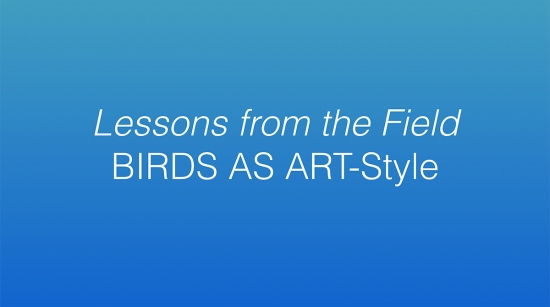
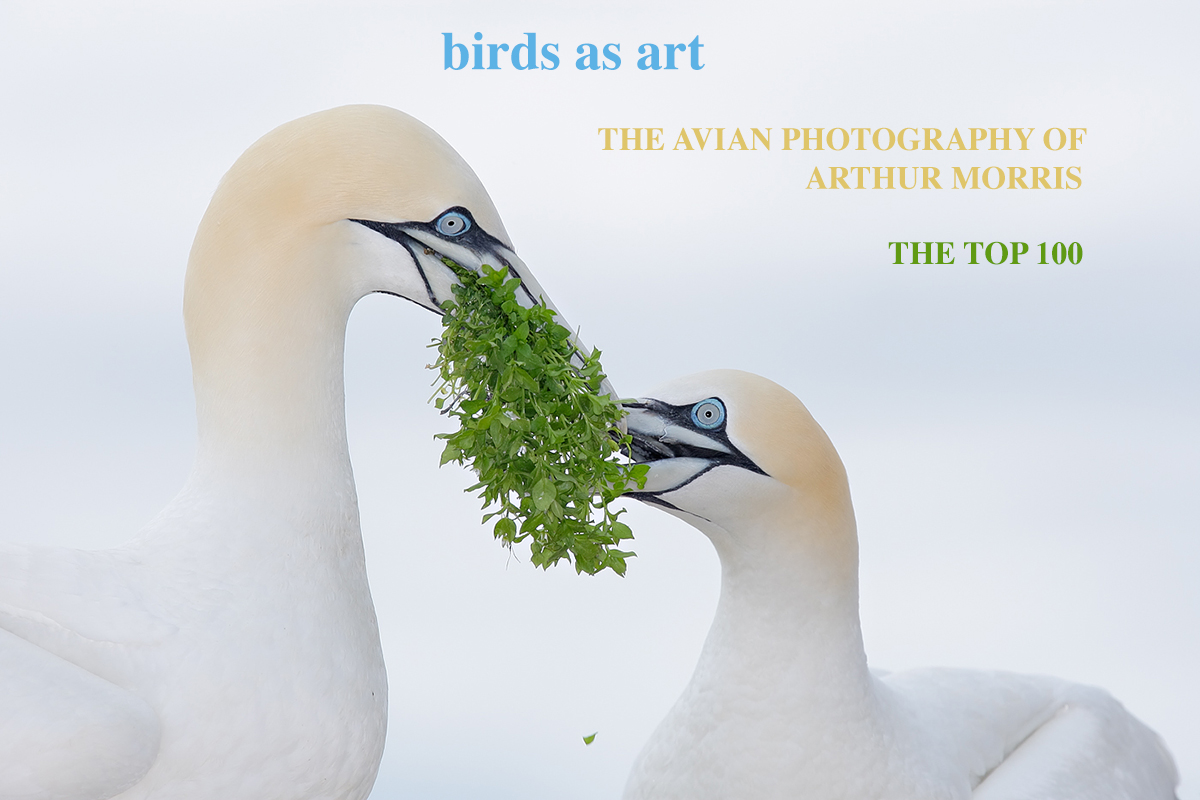

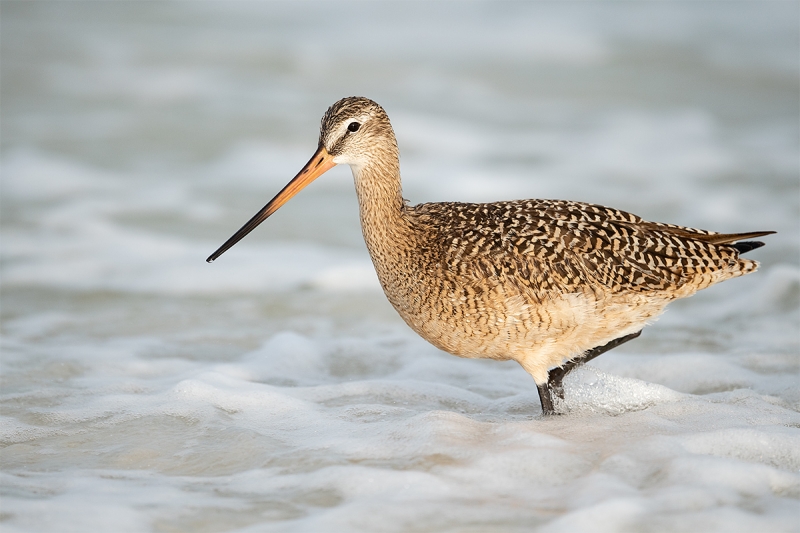
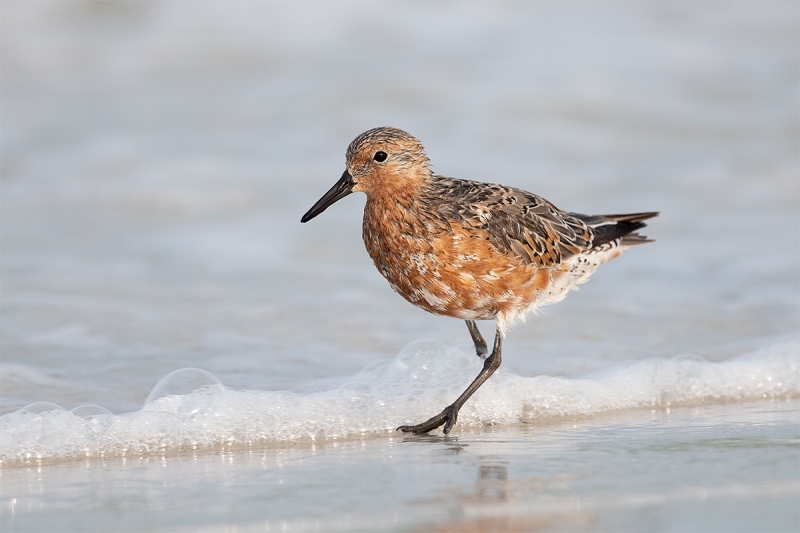
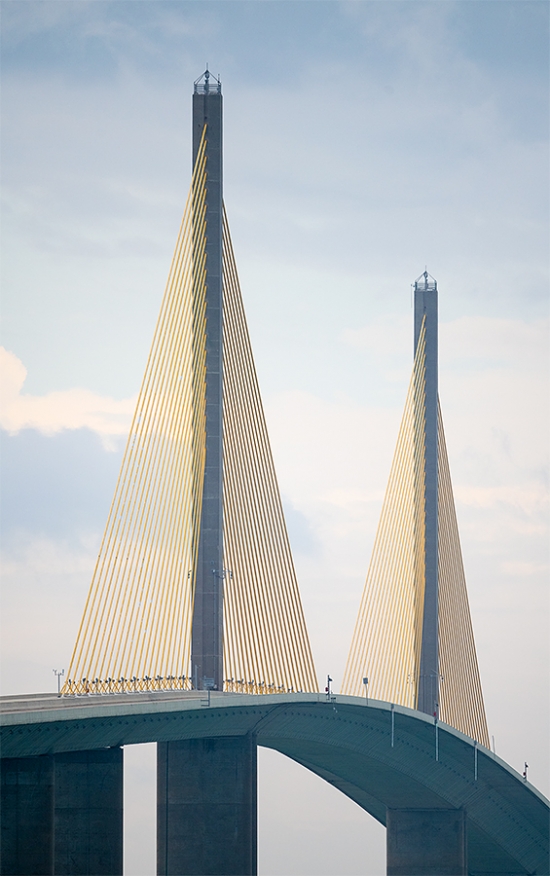
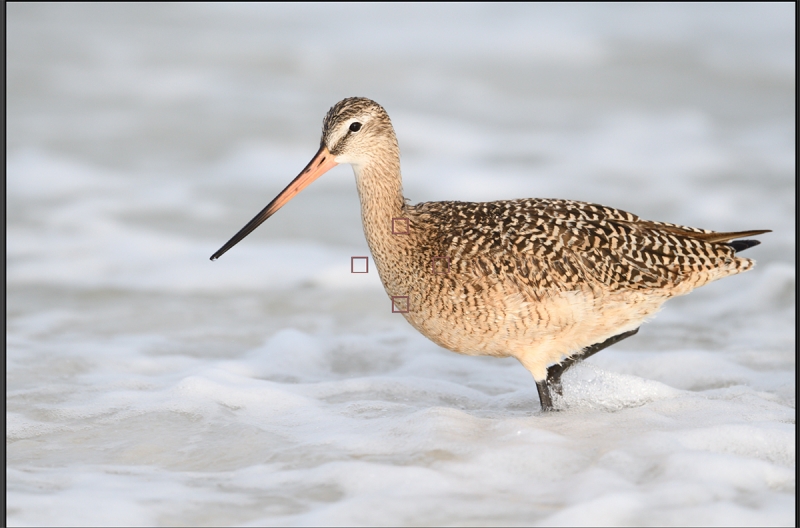
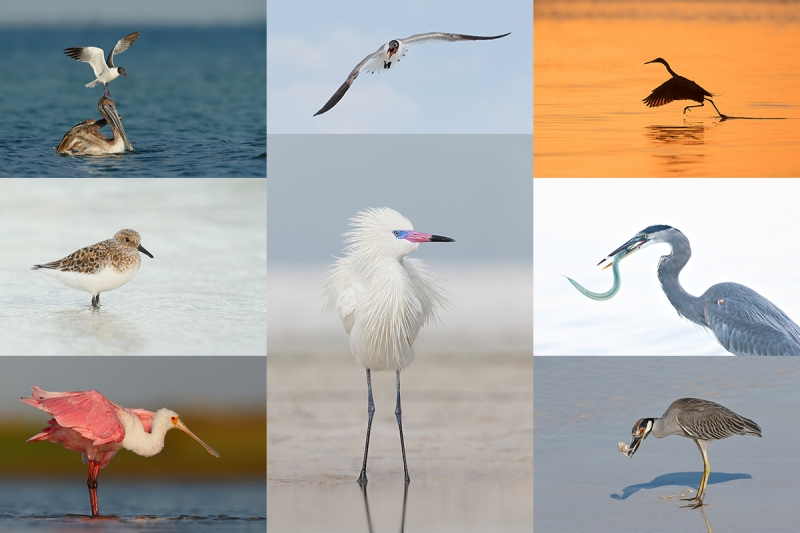
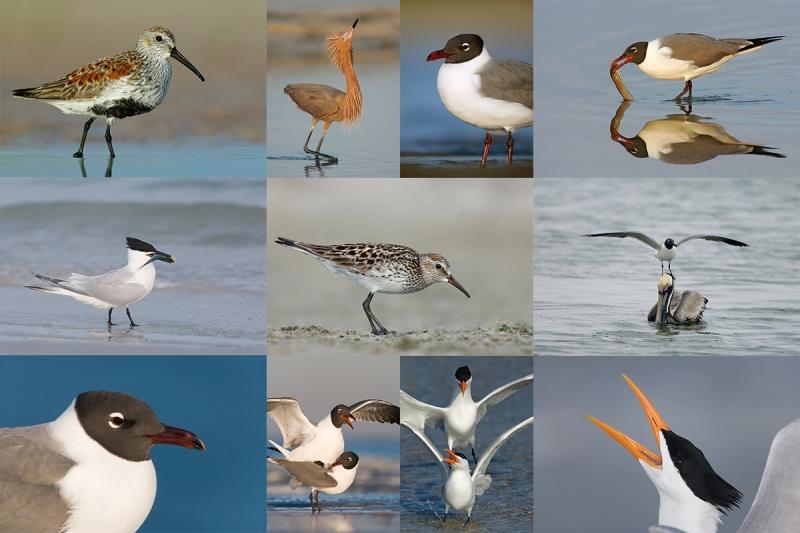
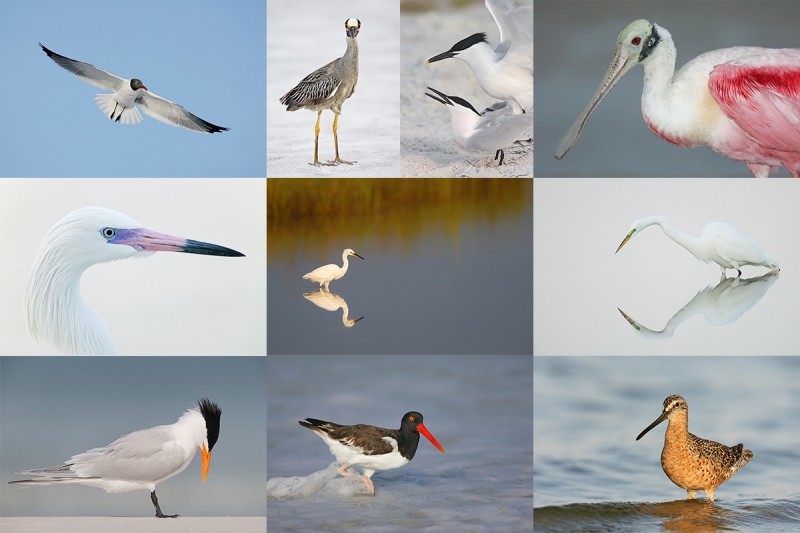
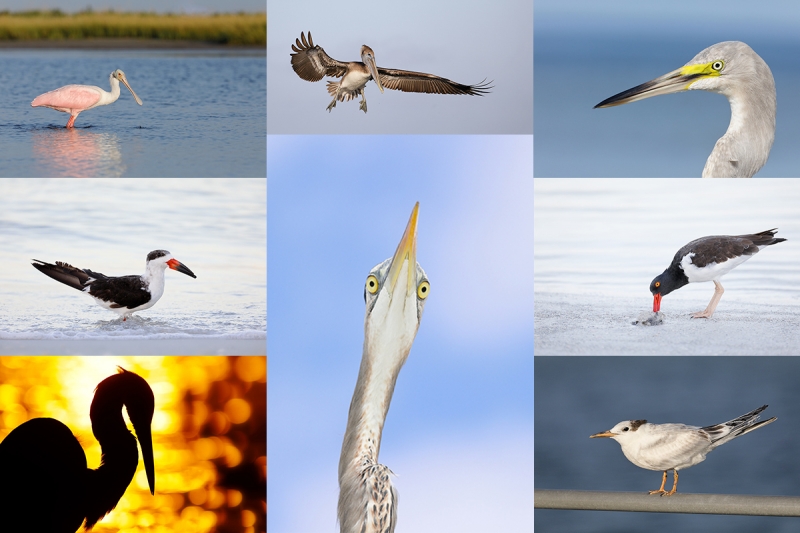














I too love the Nikkor 500mm PF. I got this hand held image of a pair of Swainson’s hawks mating today: https://flic.kr/p/2fHqnDT
Interesting moment. Thanks for sharing. Image quality is not good.
with love, artie
Hey Arthur, Im going to have to go with the marbled godwit. Love the foam in the surf and the pose as well. The bridge image is pretty nice as well.
Thanks John. Good to see you hear.
with love, artie
Of today’s photos I like the godwit. It looks very natural and comfortable as it hunts in its element. The red knot looks like it’s falling over with an awkward leg position, and the bridge composition is very static.
Thanks for leaving a comment. As for the bridge image, by static, are you referring to the fact that the bridge is not collapsing or do you feel that the composition is static? If the latter, I disagree but only 100%. It is my favorite image in part because of the image design.
with love, artie
The reason that I say that the composition is not static is because the image has angles and triangles and curves and thus visual tension.
with love, artie
I felt it was static because I thought it was very centered and symmetrical. On additional viewing, I see that it’s better than I thought initially.
Hey Steve, Thanks, and thanks for being open.
with love, artie
I happen to know you have a sentimental kind of kindred spirit for Marbled Godwits. But, having said that I think the Red Knot shot is my favorite of the 3 and am guessing your heart and eyes are telling you the same. Even though you went thru so much time, effort and ink(blog time) on the bridge. Which is a nice shot by the way…. Let me know if my Sherlock Holmes rendition was close! I had no help from Watson by the way….
Thanks Jeff, My very fave is the bridge image 🙂
with love, artie
It does look like the bridge is going to sail away. Pretty cool looking shot.
Artie…………thanks for your kind words. Honestly I’m still learning the Nikon gear and that’s really why I asked the original question. I haven’t shot in a situation with shorebirds running around yet so can’t offer an opinion. Your explanation of why you chose group AF makes perfect sense to me and I’ll have to give it a try on more than just flight subjects. I could certainly see group working well on quick moving shorebirds and will definitely try it. So far, I’ve really only tested the Nikon gear doing flight with the 500 PF (I’m in love) and at set-up type situations. Thank you again for your insight……………
Bri, You are welcome times two.
with love, a
I love the bridge, great composition Artie !
Thanks. Me too 🙂 It is my fave.
a
Artie
I have known about the Flexshooter Head for a couple of years (heard about it through Andy Rouse) and have been interested but no one over here seemed to have one. I will be interested in your report. Is the only way to get one still buying from the European store and how long did it take to get it? I will always hold a special place in my heart for the Red Knot……so I love this one…..incredible detail.
I have twenty units here. They will be in the store soon. I can get you one sooner than that if you are interested. I will only have positive things to say about it and my instructions for using it will be clear and comprehensive. Andy’s videos are great but he misses a few important points.
with love, artie
Which size/sizes do you have?
I have the Flexshooter Pro, the intermediate size. I have been using it with the 600 VR down to my macro lens. They are $599 plus shipping to the lower 48 states.
You can call Jim on Monday at 863-692-0906 to order. Or send a check and LMK.
I had them build my stock with a slightly larger knob for the clamp. I have one with the original small knob if you would like that one.
with love, artie
I’m pretty sure that’s the size I was looking at. Did you buy any of the recommended plates? I’ll check some things out and give Jim a call Monday. I just unpacked from one trip and am getting ready for another.
Thanks for your purchase!
with love, artie
ps: be sure to see the Tuesday afternoon blog post for set-up info.
Artie………..I find it interesting that you were using group AF for these shorebird images. Can you explain your thinking and what advantage(s) you see for group in a situation like this?
Hi Bri,
I have gone back and forth on using group most of the time even for non-flight. My primary reason that it holds better than d-9 and is a bit more highly targeted than d-25. Single point is too, too narrow for me. If I have a bird at rest I will go to single point if I have the time.
What do you use for shorebirds?
with love, artie
ps note: Brian Small is yet another top bird photographer who recently switched from Canon to Nikon. Brian surely leads the world in sales to various field guide projects and has a huge North American list of species photographed.
H Artie,
Great info about the advantages of the 500PF. I really enjoyed the images, especially #2.
I know you don’t put a lot of faith in APS-C sensor cameras but they are much better than they used to be. I bet the D500 would be amazing with the 500PF. It’s much lighter than the D850, shoots 10FPS without having to add a grip, has virtually the same focus system as the D5 & D850, and would give you an effective 750mm or 1050 with the 1.4 tele. The D500 is a bargain at under $2,000. Please click on one of your affiliate links when you order yours. 😉
Hi Phil,
Thanks for your comments. Joe Przybyla, who is co-writing the new BAA Middle of Florida Photographic Site Guide with me, uses and loves the D500. I like my D850 files too much to give that one a try. That said, Joe is a fine photographer; he posts often on BirdPhotographer’s.net.
No can do on using my own link 🙂
with love, artie